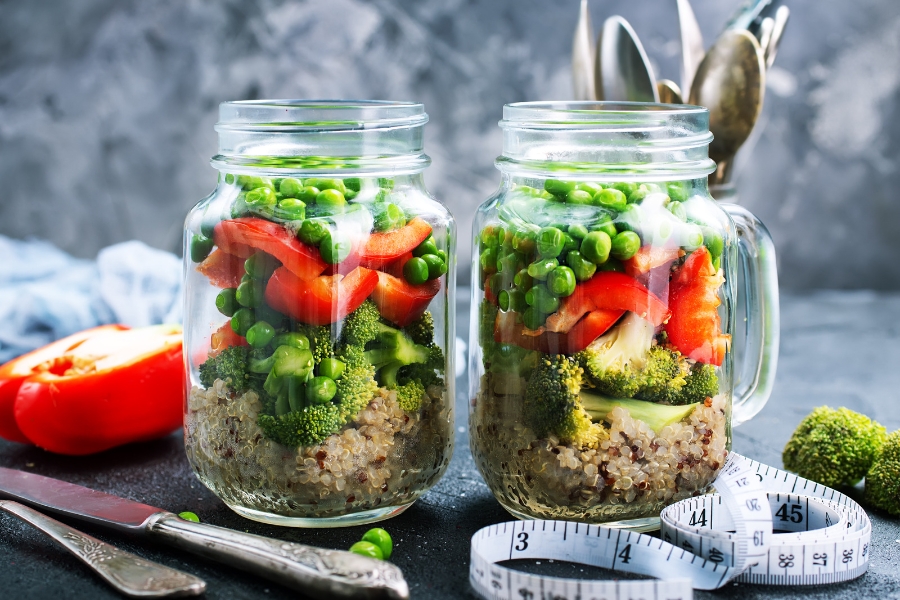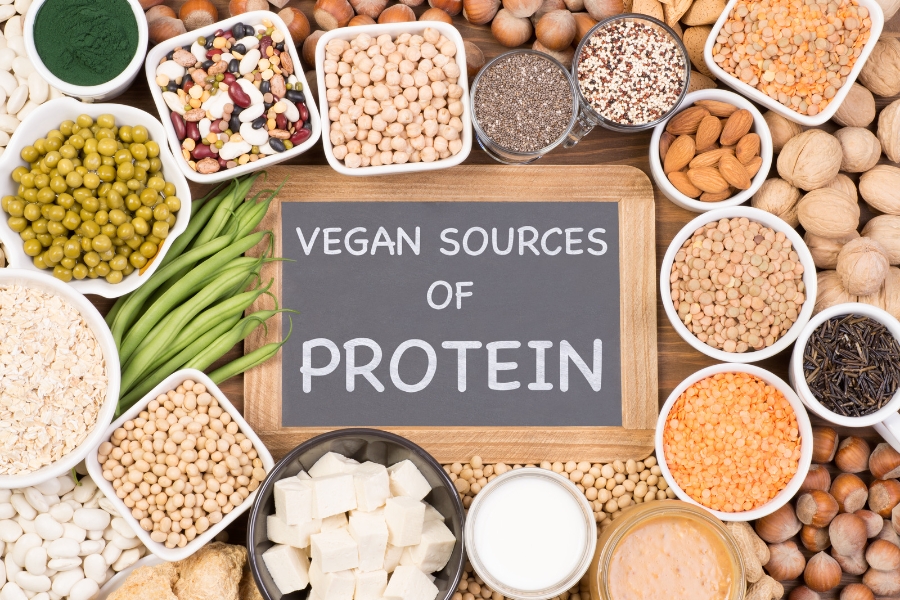
From The Exclusive Collection of FREE Plant-Based Recipes
By Plant-Based Nutrition Professional Chef Susy • Designed For Effortless Weight Loss & Weight Maintenance
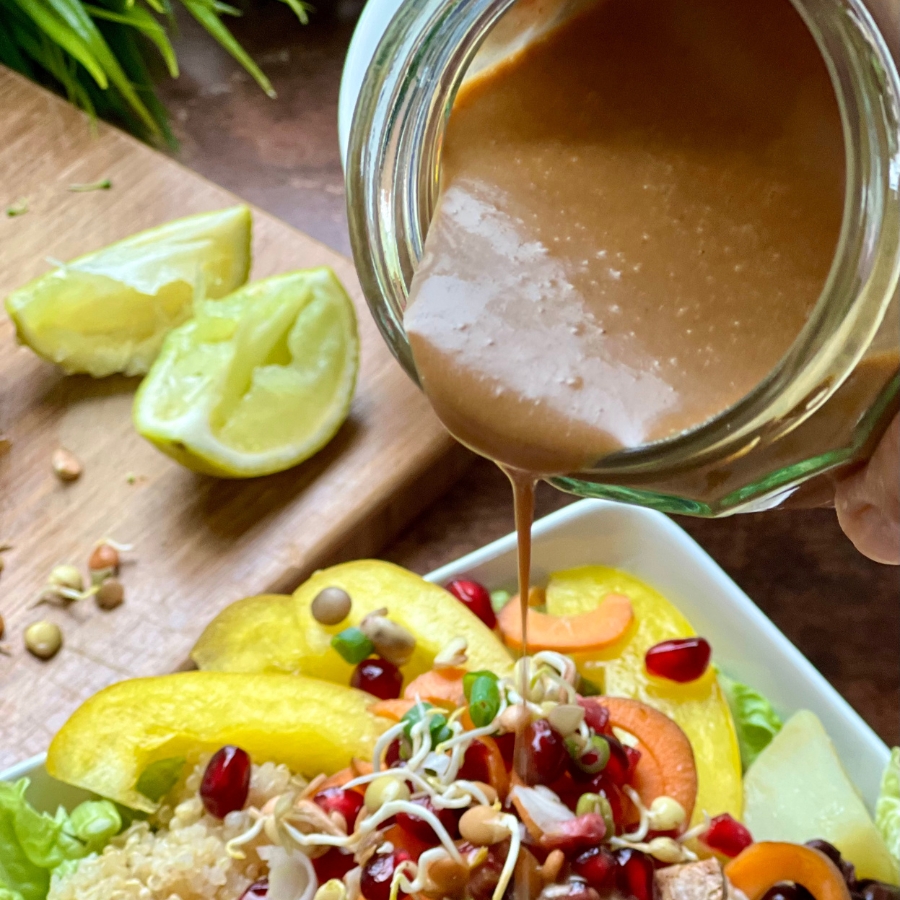
Spicy Peanut Satay Sauce
(Vegan Recipe)
My vegan peanut satay sauce is the perfect way to bring the authentic flavours of Southeast Asia right into your kitchen. With its creamy texture, zesty spice, and a hint of sweetness, this sauce is a must-try for any vegan or vegetarian or vegan-curious.

Prep Time: 10 Mins | Total Time: 10 Mins
Servings: Adjustable

Let's Be Friends!

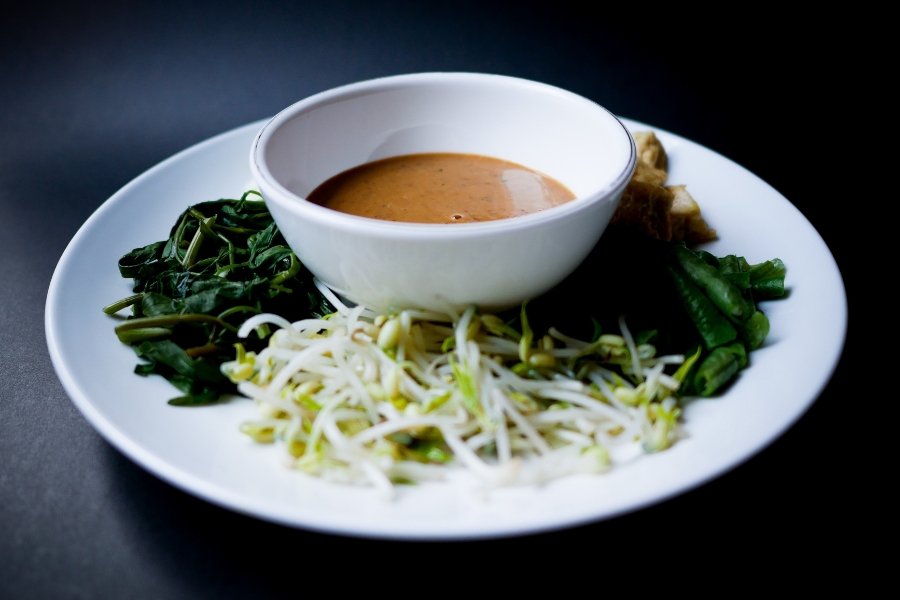
Spicy vegan peanut satay sauce with a zesty flavour and just the right level of spice. Prepared in minutes and perfect as a dip with snacks & full-course meals.
I love anything that has peanuts in it. No wonder why satay sauce has always been a favourite. And I’m so pleased that I’ve finally settled on the best-tasting and easiest recipe for the vegan peanut satay sauce. I make sure to have it in the fridge at all times because… you never know when those late-night cravings might hit 😜
Table of Contents
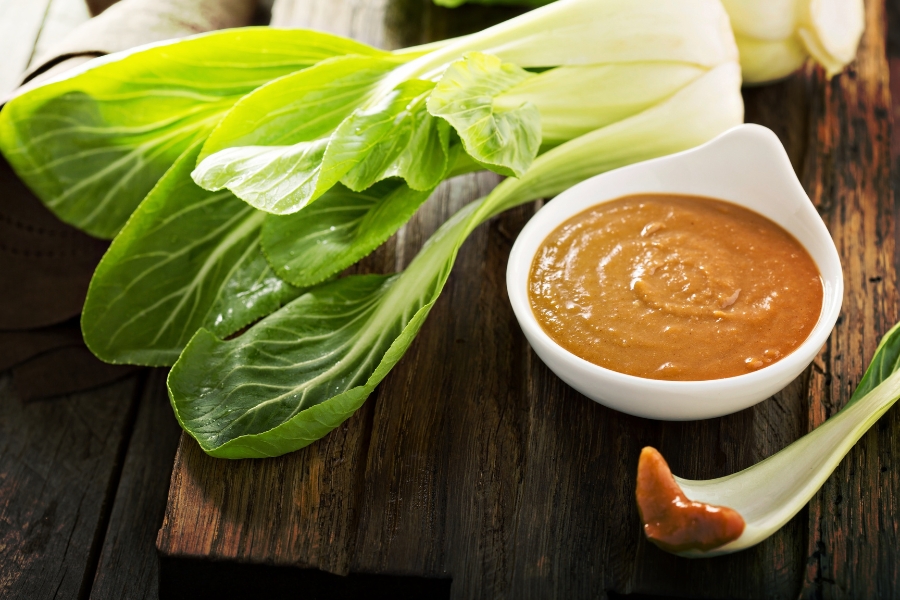
Why This Recipe Works
The Simplest
Satay sauce, sometimes called ‘peanut sauce,’ has multiple variations across the Philippines, Malaysia, Indonesia, Singapore, Thailand, and Sri Lanka. It took me a little while to figure out the best recipe. When trying different versions, I kept one thing in mind: keep it simple. I knew, as much as I love the sauce, complex ingredients and a long recipe would put me off.
Note: The satay sauce recipe in this article is not authentic to the flavours of a particular region. The well-rounded sour, sweet, and spicy combo is the main inspiration.
Customised Flavours
Why would I want to make the sauce myself if I can find store-bought versions? Preparing satay sauce at home from scratch allows you to control the flavours, the consistency, the spice level, and even the calories. You can always omit and add ingredients based on your preference.
Lasts Well
Vegan peanut sauce lasts well in both the fridge and freezer. So you can batch-make it on a free day to keep yourself ready to whip up a delicious meal on a busy day. Yes, you can make delicious meals with satay sauce—jump to the FAQ section ‘How to serve satay sauce’ below to find out how.
Vegan
Satay sauces often contain dairy milk and ingredients like shrimp, which makes it non-vegan. However, my recipe replicates all the authentic Indonesian flavours without any animal products. So you can indulge in the goodness of the sauce without any guilt!
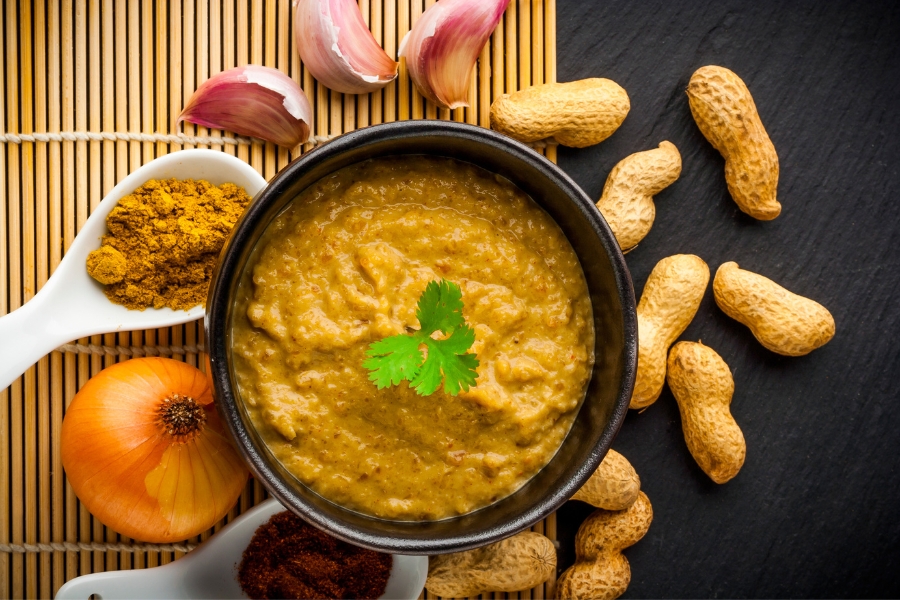
Recipe Ingredient Notes
Peanut butter powder - Ideally, it should be a 100% natural powder made with peanut flour. I love this peanut butter powder as it’s high-protein, 70% less fat, and it helps with weight control. If you can’t find a natural low-fat version, you may make a regular version at home, like I do sometimes. Simply fry some peanuts in an air fryer and blitz them up in a food processor. Alternatively, for ease and speed, simply use smooth or crunchy 100% peanut butter.
Chillies (chopped finely) - Vegan satay sauce tends to be on the spicy side. Not “blow-your-head-off spicy”, but certainly “oh-it’s-got-a-nice-spice-kick”. Of course, the joy of making your own sauce is that you get to control the spice level. You can increase or decrease the amount of chillies. Also, note that the sauce will get a bit of heat from the curry powder.
Garlic, onion, and ginger powder - To add aroma and depth—and some additional health benefits. For speed, I prefer using powdered versions to make sure the sauce doesn’t have garlic, onion, or ginger chunks. When using fresh onion, garlic and ginger, I always blitz these 3 ingredients into a purée first, and fry for a few minutes to mellow the flavours.
Curry powder - I’m referring to the mild, yellow curry powder. The kind that tastes similar to chip shop curry sauce or currywurst. I am not talking about “Garam Masala” curry powder, which tends to be darker and deeper in flavour.
Agave syrup or maple syrup - To balance the spicy & tangy flavours.
Tamari (or gluten-free soy sauce) - It’s a bit difficult to find gluten-free soy sauce, so I often use tamari instead. It’s a Japanese, gluten-free version of soy sauce, and I happen to prefer the flavour.
Coconut milk - I used light coconut milk. It gave me the perfect consistency for the sauce and it helps to keep the calories in check. If you have full-fat coconut milk at home, you can use that too—and in case the sauce is too thick, add a bit of water to adjust the consistency.
Oat milk - Provides a smooth sauce texture. Use unsweetened oat milk to have better control over the sweetness.
Lime juice - Use freshly squeezed juice for the best results.
Pinch of pepper and salt - Rounds up flavours.
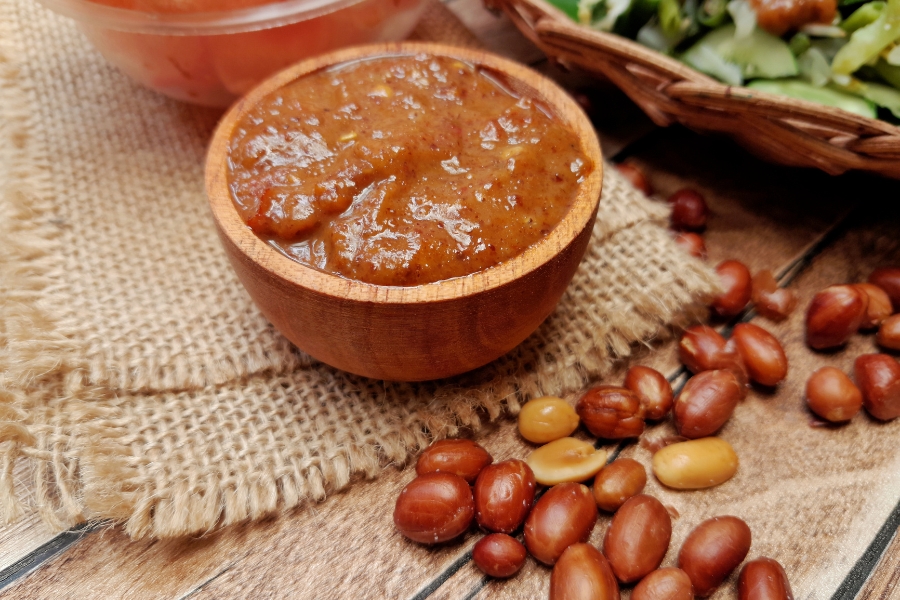
How to Make Plant-Based Satay Sauce
Add all the ingredients to a blender.
Blend the ingredients until you reach the desired consistency. Tip: Add more oat milk or peanut butter powder as desired.
Season the dressing. Then, taste test and adjust by adding more of what you like—lime juice for tanginess, agave for sweetness, or red chilli flakes for spiciness.
Serve and enjoy! It's that easy 🥜 🤗
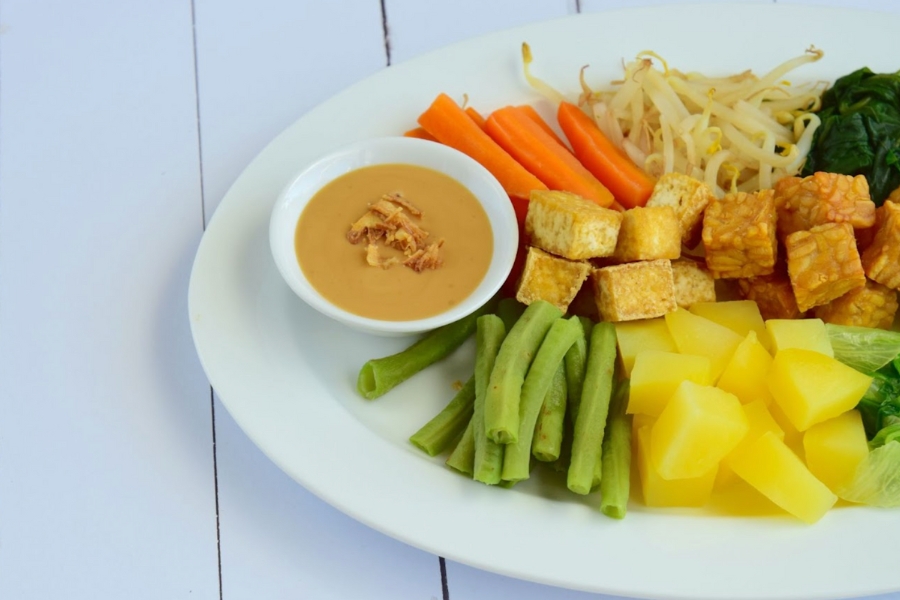
Variations, Ideas & Notes
The sauce has so many variations, which means there are tons of ways to customise the recipe. You may use—
Tabasco or chilli flakes instead of chillies.
Muscovado sugar instead of maple or agave syrup.
Lemon juice instead of lime juice.
Almond or cashew milk instead of oat milk.
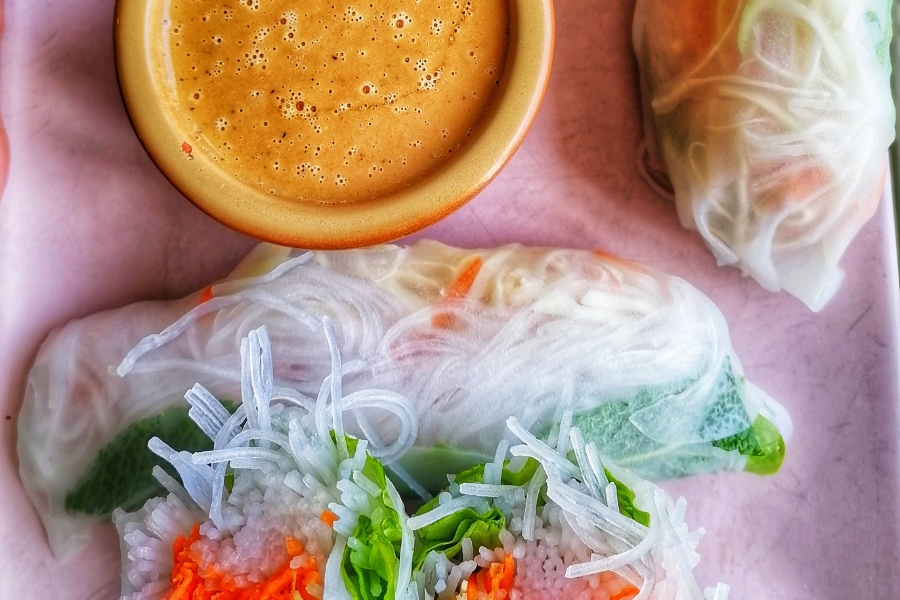
Pro Tips For This Recipe
While you can’t make the recipe entirely nut-free (unless you use sunflower seed butter or tahini instead of the peanut powder or peanut butter) , you can also substitute other nuts for peanuts if only peanuts are the issue.
If preparing the dressing in advance, add a few splashes of water or extra plant-based milk and whisk until the desired consistency and pourability are achieved—bearing in mind it will thicken naturally in the fridge.
To ensure a lump-free consistency, make sure to mix the ingredients thoroughly before thinning down the sauce with water.
Use unsweetened peanut butter so the flavour isn’t thrown out of balance. If your peanut butter is already salty, I recommend using only 1 tablespoon of soy sauce.
Toast the spice powders briefly in a skillet for a deeper flavour.
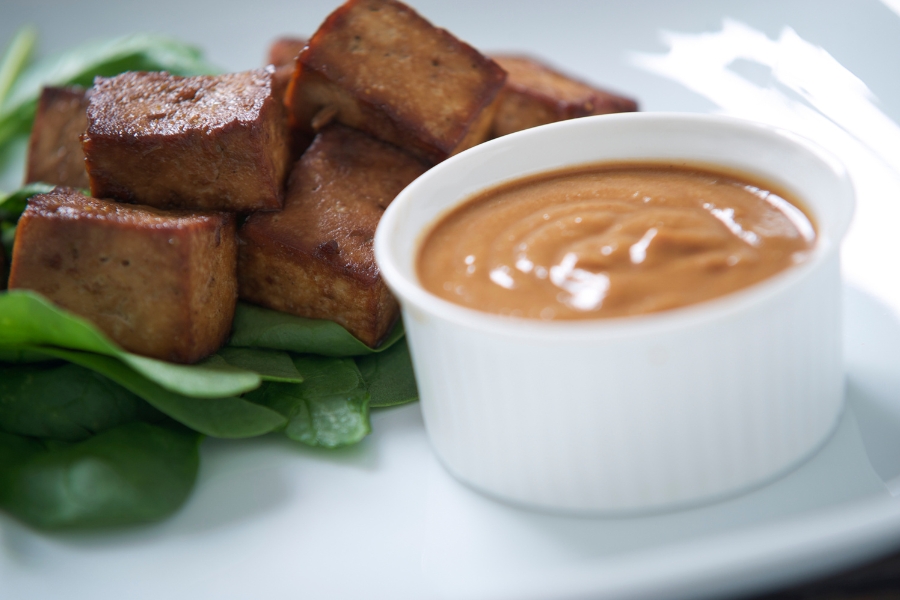
Frequently Asked Questions
How to serve vegan satay sauce?
My favourite part: making delicious combinations with satay peanut sauce.
Pour over a vegan Buddha bowl.
Drizzle over a bowl of vegan umami ramen.
Pour over a bowl of vegan Chinese noodle soup.
Mix it in a bowl of vegan linzen (lentil) soup.
Use as a dressing for Mexican mango salad.
Serve as a dip for veggie crudités or veggie wraps.
Enjoy with crispy foods like air-fried tofu, onion bhajis and samosas.
Spread over crackers topped with sliced cucumber (sounds weird but tastes amazing!)
For a more kid-friendly idea, you can pair a mild satay sauce with—
Stir-fries
Noodle dishes
Spring rolls
Crispy tofu
Sweet potato fries
Tip: Serve satay sauce about 10 minutes after cooking, while it’s still warm but cool enough to become the perfect thickness for dipping.
Are satay sauce and peanut sauce the same?
Yes. The sauce originated in Indonesia, where it is called "Satay Sauce" or "bumbu kacang". However, Americans have named it "peanut sauce." So it's basically the same thing with the same ingredients but different names.
What does plant-based satay sauce taste like?
Satay peanut sauce is a versatile combination of flavours. It is…
peanutty
aromatic
spicy
savoury
subtly tangy
a bit sweet
and creamy
Is satay sauce healthy?
Everyone has a different definition of ‘healthy’. In my opinion, vegan peanut sauce is nutritious—and much healthier than those regular store-bought dips, like ketchup and mayonnaise.
The main ingredient, peanuts, are an incredible source of protein and plant-based fats. Yes, the recipe includes sweeteners, like maple syrup. But everything is in moderation, right? Once you try this recipe, you won’t want to go back to unhealthy, high-calorie sauces.
How to make satay sauce look darker?
Use caramel sauce. If your vegan peanut sauce looks too light, and perhaps, unappealing, caramel sauce can help. It darkens the colour without altering the taste. Tip: 1 or 2 teaspoons will be enough.
Final Words
Nothing better than the vegan satay sauce. It’s so versatile, super addictive (in a healthy way), and comes together in literally 10 minutes!
If you made the recipe, make sure to tag me on Instagram @vegan.susy
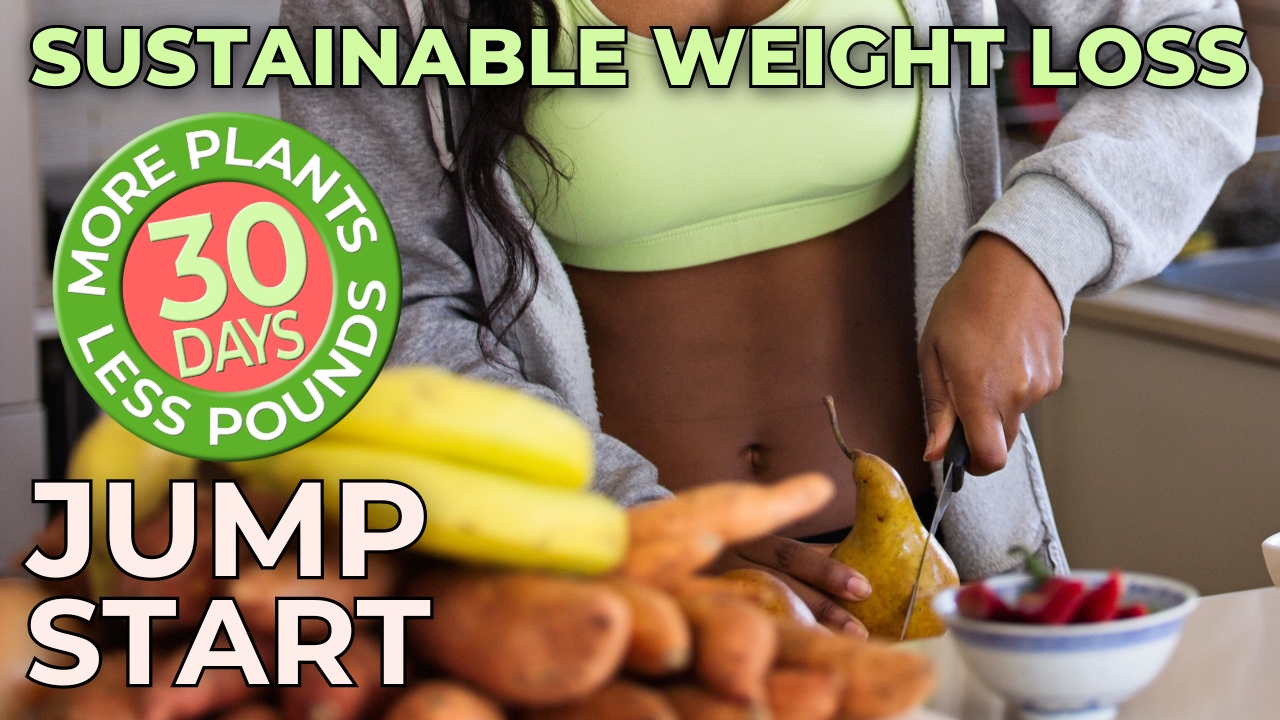
More Free Resources
Unlock Your Transformation Today!
Empower Yourself: Embark on a Delicious Fat Loss Adventure

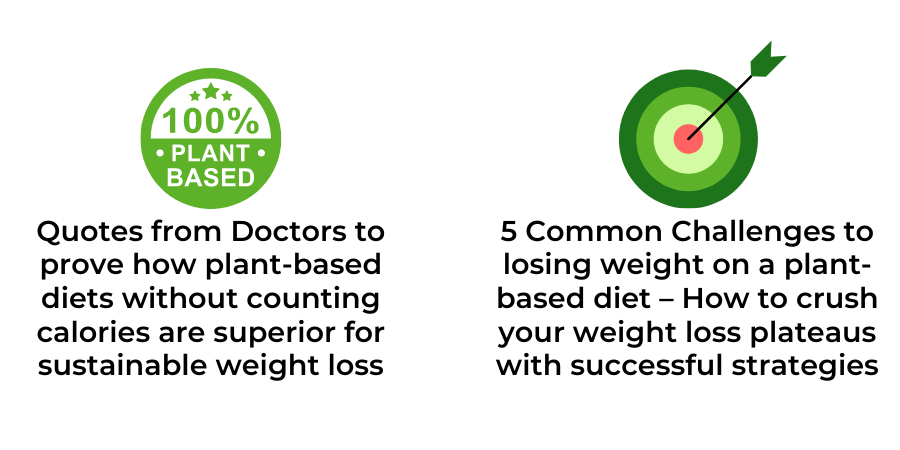

🍉 Get Ready to Jump Start Your Fitness Goals AND DISCOVER A HEALTHIER YOU!
🍉 Let's Make Your Fat Loss & Optimum Health Journey a Delicious Success Story!
🍉 Get The FREE Sustainable Weight Loss Companion eBook and CHEAT SHEETS!
© 2025 VeganSusy Ltd. All Rights Reserved







